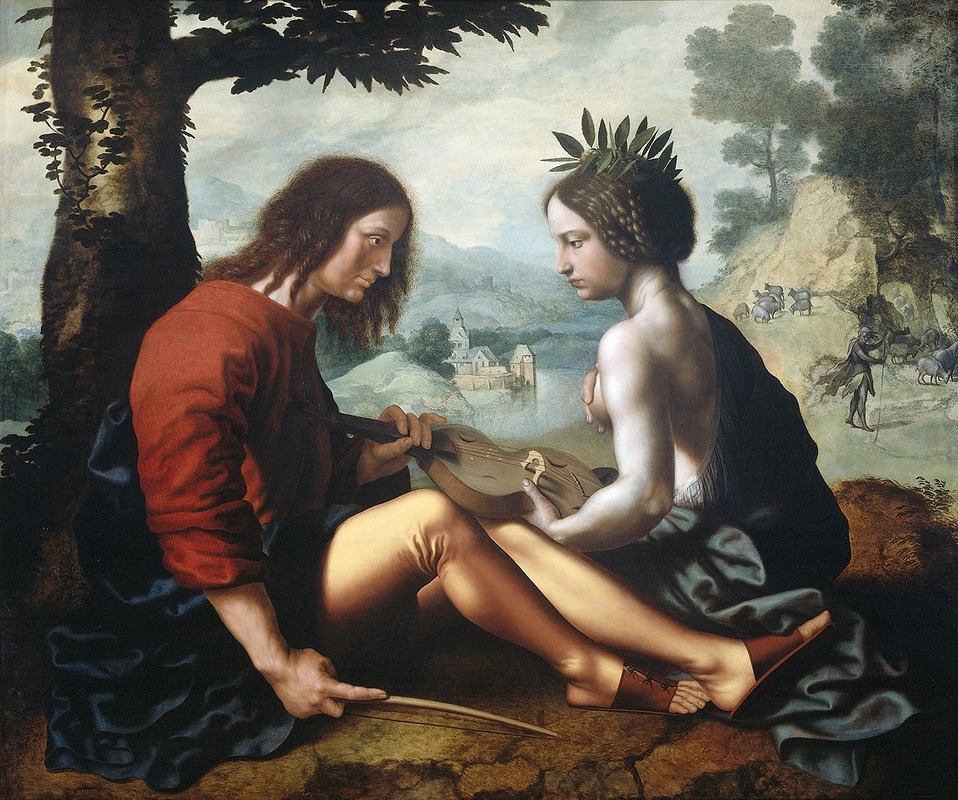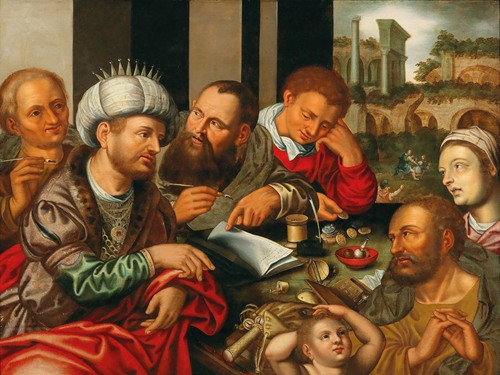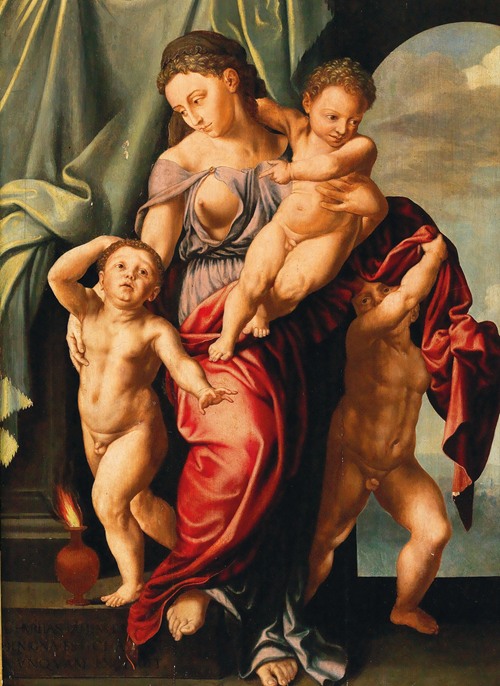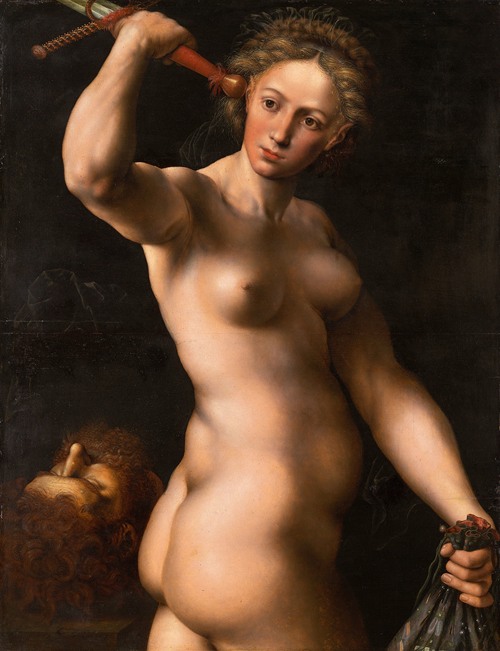
Jan Sanders van Hemessen was a leading Flemish Renaissance painter, belonging to the group of Italianizing Flemish painters called the Romanists, who were influenced by Italian Renaissance painting. Van Hemessen had visited Italy during the 1520s, and also Fontainebleau near Paris in the mid 1530s, where he was able to view the work of the colony of Italian artists known as the First School of Fontainebleau, who were working on the decorations for the Palace of Fontainebleau. Van Hemessen's works show his ability to interpret the Italian models into a new Flemish visual vocabulary.
Hemessen played an important role in the development of genre painting, through his large scenes with religious or worldly subjects, set in towns with contemporary dress and architecture. These works depict human failings such as greed and vanit, and some show an interest in subjects with a financial angle. His genre scenes develop the "Mannerist inversion" later taken further by Pieter Aertsen, where a small religious scene in the background reveals the true meaning of the painting, which is dominated by a large foreground scene seemingly devoted to a secular genre subject. One of his best known works, the Parable of the Prodigal Son, expresses a religious theme through a pure genre painting set in a tavern and can be regarded as an important early statement of the merry company tradition. He also painted a small number of portraits, some of exceptional quality, influenced by Bronzino. Van Hemessen was also known for his large nude figures, a subject matter that he had familiarised himself with in Italy.
He was based in Antwerp between 1519 and 1550, joining the artist's Guild of Saint Luke there in 1524. After 1550 he may have moved to Haarlem. He painted several religious subjects, and many others may have been destroyed in the Beeldenstorm that swept through Antwerp in the year of his death.






